On our first day of sightseeing in Macau, the place to go was none other than the Ruins of St. Paul’s 大三巴牌坊, the Historic Centre of Macau at Macau Peninsula.
After booking an additional night stay at The Venetian, we checked with the hotel reception for direction to the Ruins of St Paul’s. As there is no shuttle bus service from The Venetian, we hopped into a taxi, in about fifteen minutes we reached the Ruins of St Paul’s. The taxi drove passed the Lisboa Casino & Hotel Resort before stopping behind the Ruins of St. Paul’s, next to the Macau Museum.
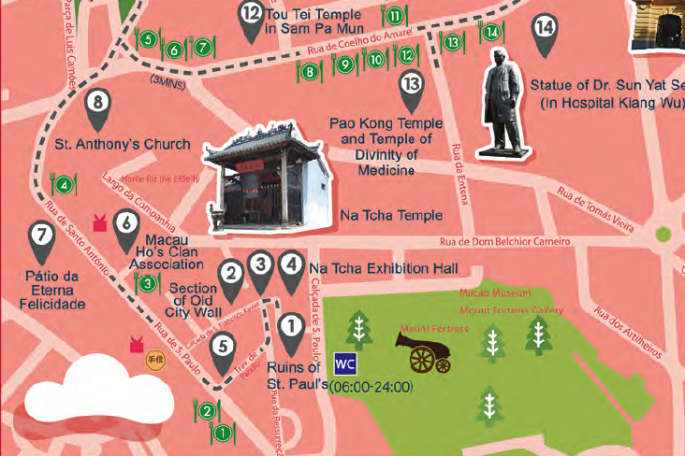
The Ruins of St. Paul’s
The Ruins of St. Paul’s refer to the facade of what was originally the old Church of Mater Dei built. The Church was built in 1580 and suffered two fires in 1595 and 1601 and later being reconstructed in 1602. In 1835, the church suffered its third fire which it was almost completely destroyed, only remaining the main facade and its foundations.
Since then, what is left of the Old Church has become what is known worldwide as Ruins of St. Paul’s, from which the term 大三巴 is recognised in Chinese and the facade of the Old Church is known as 牌坊 in Chinese as it resembles a commemorative traditional Chinese arch.
Now, the facade of the Ruins of St. Paul’s functions symbolically as an altar to the city. If one has not visited the Ruins of St. Paul’s when they visited Macau, it is as good as not having been to Macau.
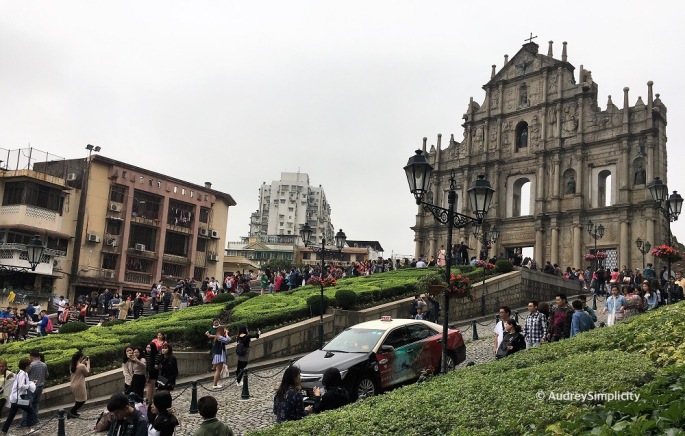
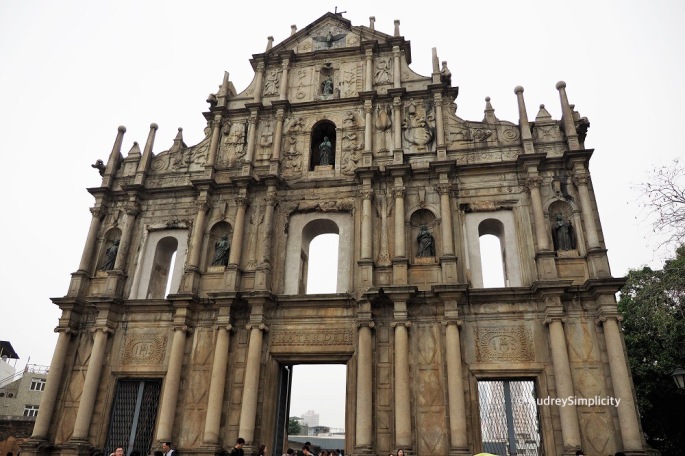
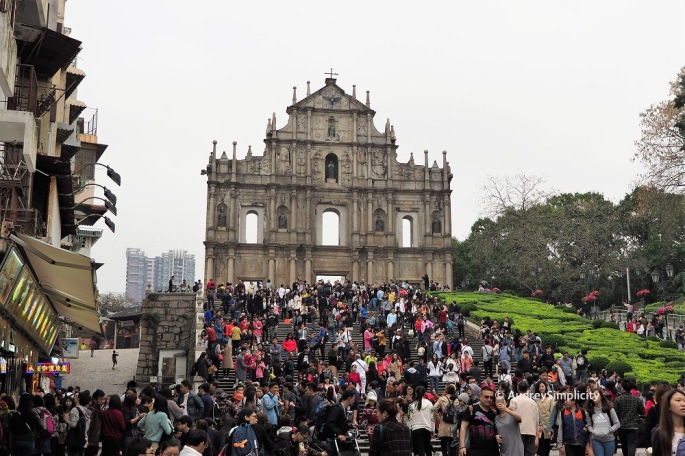


After taking many pictures of the Ruins of St Paul’s, we walked into St Paul’s to learn about the history. At the back of the facade is the Museum of Sacred Art and Crypt. No pictures are allowed in the Crypt.

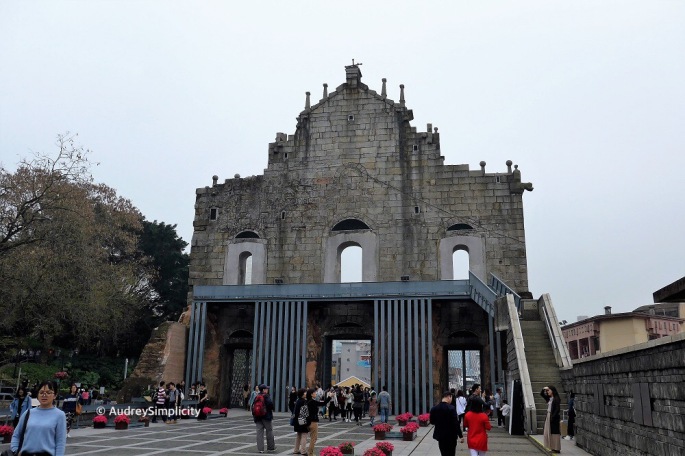
As we have yet to take our breakfast, we walked around to look for a cafe for brunch and found a traditional cafe. We went in for some comfort food for brunch.
Mount Fortress Garden
After filling our stomach, we walked up to the Macao Museum. Instead of visiting the Museum, we went to the rooftop garden – Mount Fortress Garden.
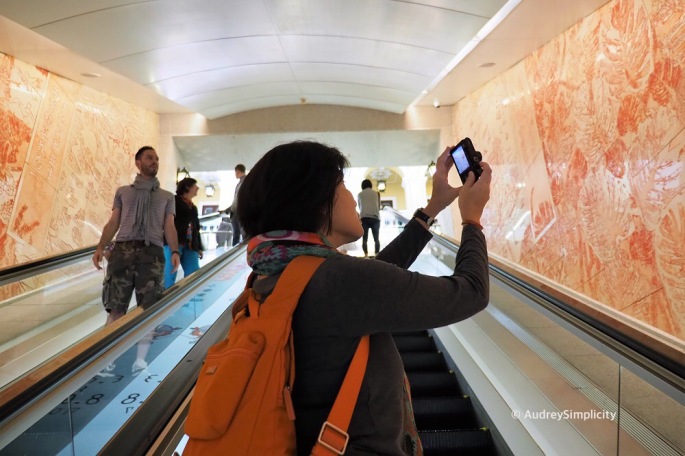

Mount Fortress or the Fortress of Our Lady of the Mount of St. Paul was built by the Society of Jesus in 1617 on top of the Mount Hill and completed in 1626. The Fortress stands atop a hill and is adjacent to the remains of St. Paul’s College.
The top platform of Mount Fortress features Mount Fortress Garden, offering a panoramic view of the landscape of the Macau Peninsula. The walls facing the Chinese mainland are primarily built of granite and do not consist of any battlements, indicating that the fortress was built only for defence against attack from the sea.
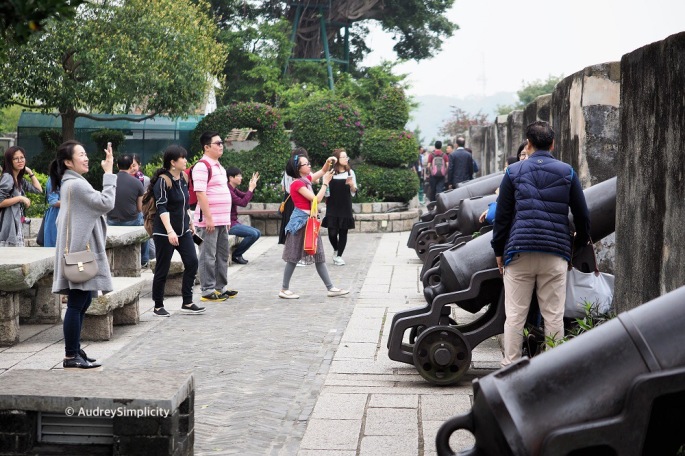
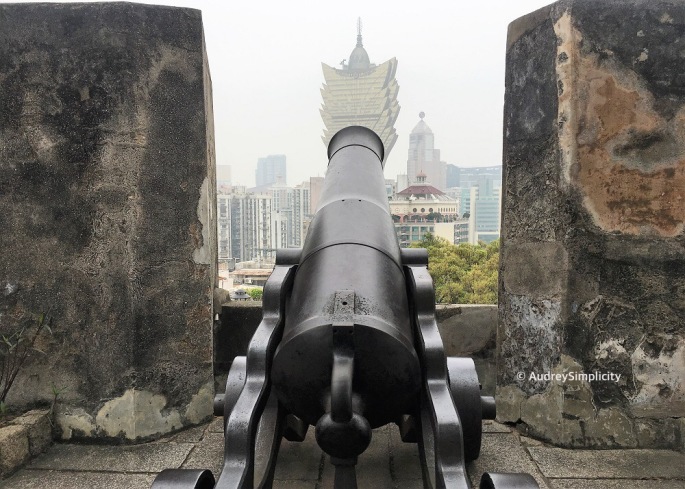
The Bronze Bell displaying the historic coat-of-arm of the City of Macau is a replica. The purpose of the Bell is to alert the population of any dangerous situation.
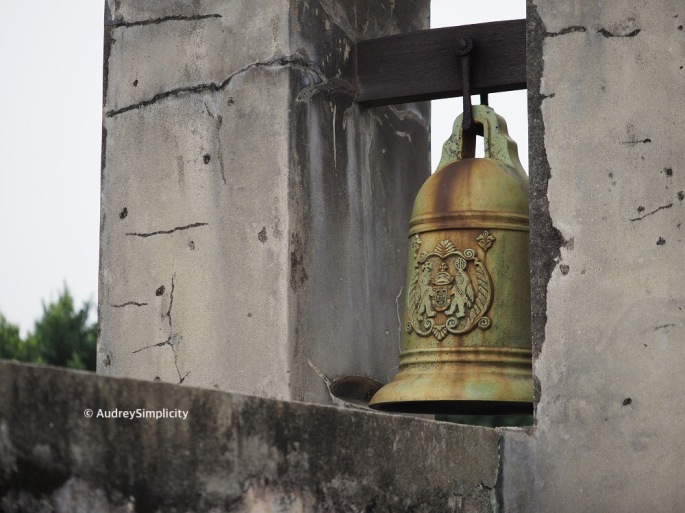
Besides entering the Mount Fortress via the Macao Museum, the fortress can also be accessed via a short winding path leading to a spacious platform at the top. The Macao Museum was launched in 1998. And in July 2005, the Historic Centre of Macao was inscribed on UNESCO’s World Heritage List. Mount Fortress is one of the important historical architectural structures included in the Historic Centre of Macao.
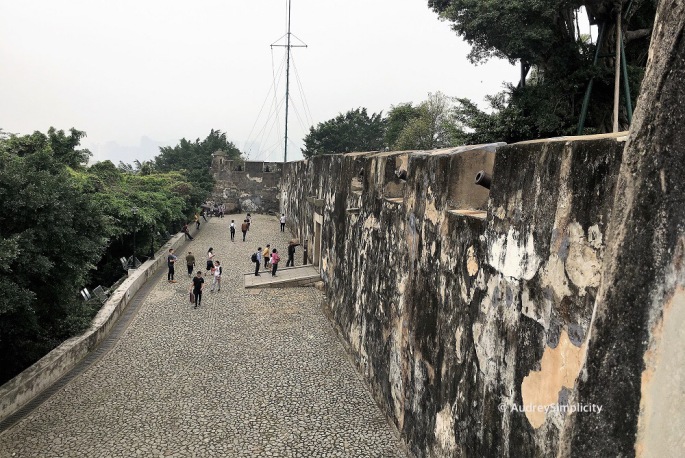


The old Church of Mater Dei, St. Paul’s College and Mount Fortress were Jesuit constructions and formed what can be perceived as the Macau’s “acropolis”.
After visiting the Mount Fortress, we went for a coffee break and discreetly ate our Portuguese egg tarts as no outside food is allowed, before exploring other parts of the Macau Peninsula.
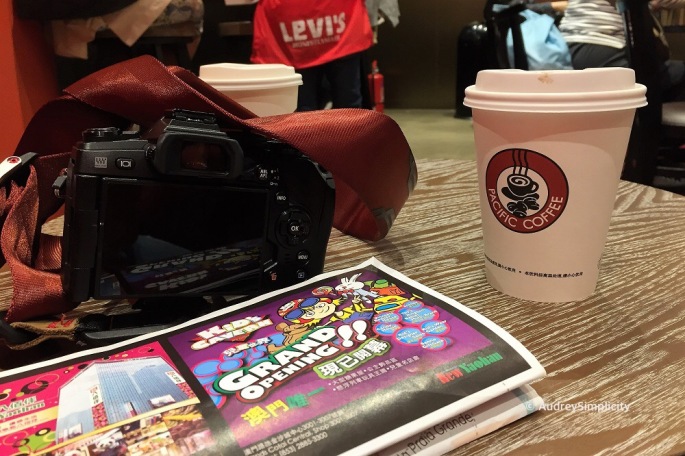

Na Tcha Temple
After coffee, we walked up towards St. Paul’s and made a right towards Na Tcha Temple. This Chinese temple was built in 1888 and renovated in 1901. This temple is dedicated to the worship of the deity of Na Tcha. Next to the temple, is the Na Tcha Exhibition Hall. It is built to introduce the legend of the deity of Na Tcha and showcases the ceremonial vessels and offerings.
According to a popular story tale, Na Tcha is the third son of Li Jing, the General of the city of Cheng Tan Guan and he was in his mother’s womb for three years. When he was young, he played in the ocean and killed the son of the Dragon of the Eastern Sea by accident. He stood accused and had to cut his meat and bones to return to his parents. The deity, Tai Yi Zheng Ren, used the leafs from the lotus flower to recreate a new body for Na Tcha and he transformed into one of the greatest warriors of the Emperor of Heaven.
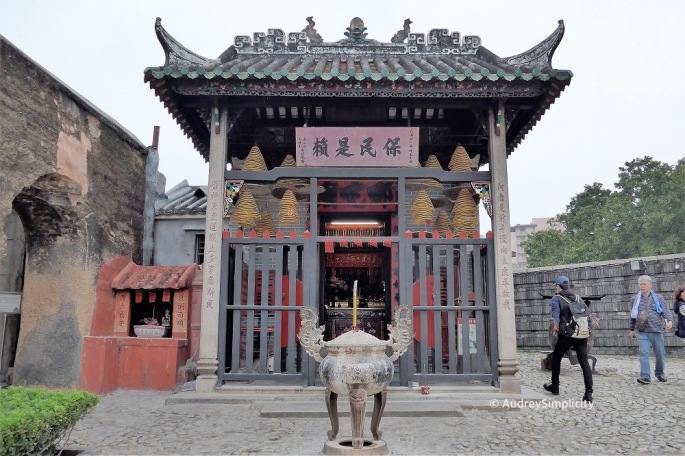
In the second half of the 19th century, Macau suffered from epidemics that threatened the residents of both Chinese and Portuguese communities, who became vulnerable to the infections. A citizen then received a message in a dream informing that everyone would have to get water from Mount Hill and take it with Chinese medicine which in turn helped defeat the epidemic.
To express their gratitude, the local residents built a temple dedicated to Na Tcha. In 2005, the Temple became part of the Historic Centre of Macau, when it was inscribed on UNESCO’s World Heritage List.
We left the Na Tcha Temple and explore the shops below St Paul’s. There are lots of souvenir shops, most are local speciality shops that sell the famous Portuguese egg tarts and the traditional bakery and snacks.
Parting shot of the Ruins of St. Paul’s before venturing out to other parts of the Macau Peninsula.
This trip was made in Spring 2017.

The Lowdown – Ruins of St. Paul’s
Address: Company of Jesus Square
Getting there: Bus routes nearby – 3, 3X, 4, 6A, 8A, 18A, 19, 26A, 33, N1A. Certain hotel resorts provide shuttle bus service to St Paul’s.
Opening hours: Museum of Sacred Art and Crypt is open from 9 am to 6 pm daily (except Tuesday is closed after 2 pm), no admission after 5.30 pm. Ruins of St Paul’s is open 9 am to 6 pm, no admission after 5.30 p.m.
Admission: Free
For more information, go to macaotourism.gov.mo and www.macaumuseum.gov.mo.
Thank you for stopping by, Happy Living for Experiences!
Enjoyed what you read? Support me by sharing and following my blog, Facebook and Instagram.
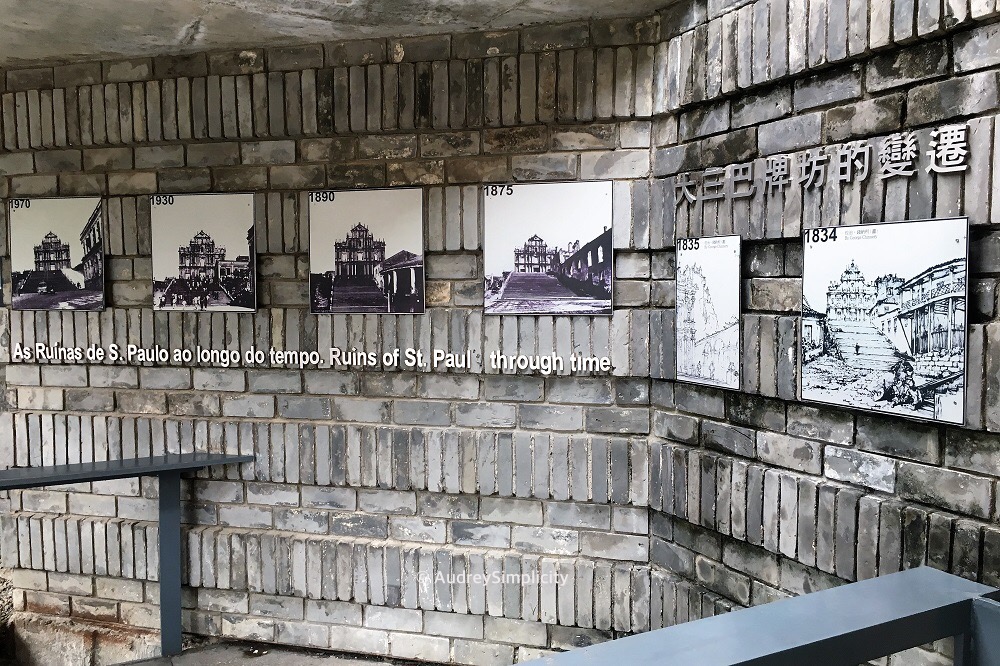







Really nice pictures you got there of Macau. Looking at your St. Paul pictures, the place is very crowded. I was there many years ago in a weekday afternoon, never see so much crowd.
LikeLiked by 1 person
These are wonderful pictures! God Bless!
LikeLiked by 1 person
Thank you 😊
LikeLike
Great pics
LikeLiked by 1 person
Beautifully written
LikeLiked by 1 person
Oh wow look at the crowd. Might have to get there early in the morning if that would help beat the throngs coming!
LikeLiked by 1 person